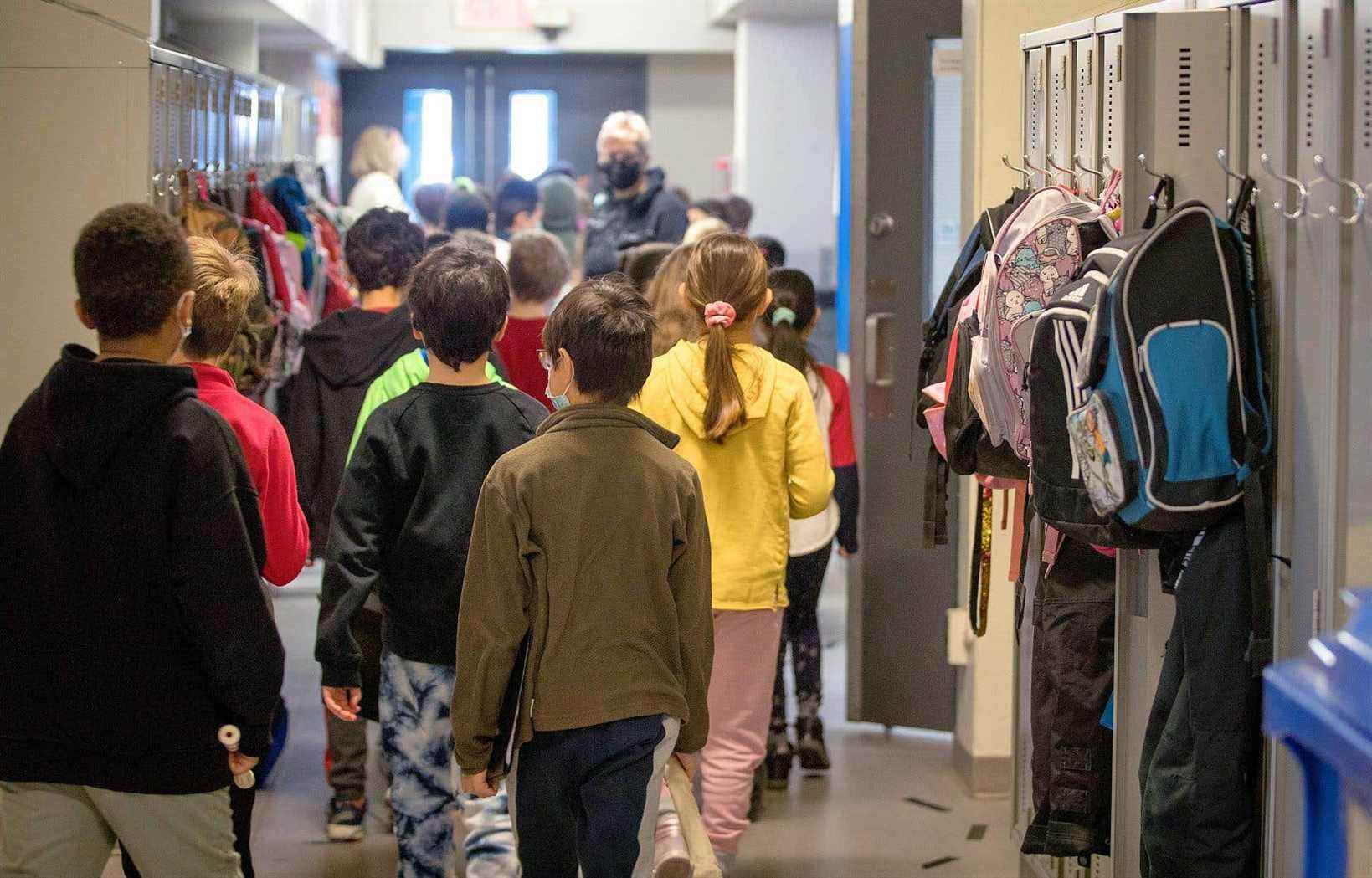Quebec is implementing a “syndromic surveillance” system to measure the absenteeism rate of students and staff in schools. Schools will have to submit a status report twice a week indicating the number of people who are isolated, who have contracted COVID-19 or who have symptoms compatible with the disease. School principals denounce this additional task, at the worst of the storm.
“We are on the line of fire, we are fighting a fire, and twice a week, we will have to stop to communicate to the ministry the color of the fire, denounces the president of the Montreal Association of directions. of school establishment, Kathleen Legault. It seems to me that there is a disconnection with what we really experience in the schools and the magnitude of the current task. »
School principals are already reporting to their school service center on absences related to COVID-19 among students. But they did not do this for employees, such as teachers, secretaries, janitors, remedial teachers, etc. “We’re going to have to enter absences in our software that allows us to pay staff and we’re going to have to enter them a second time in a document that can vary from one school service center to another. »
For Kathleen Legault, this is further proof that the government “was not ready” to reopen the schools. “We knew it would be understaffed,” she said. They will create software that will mean that we will no longer have to do it [indiquer les absences dans un document] in a month, two months, I don’t know. So we have to make up for their lack of preparation. »
At the Quebec Federation of Educational Establishment Directors, it’s the straw that breaks the camel’s back. “The yard for school principals is full,” says its president, Nicolas Prévost. People have been overworked for two years now. We are already working overtime, just for personnel management. »
Nicolas Prévost recognizes that school principals no longer have to participate in public health epidemiological investigations, which used to take a lot of time. “But just the logistics to organize to find the staff, currently, it replaces the surveys not nearly, he argues. The director is practically on his phone all day long, in communication with the human resources of his department. Everyone is chasing substitutes these days. »
Nicolas Prévost reports that remedial teachers are currently being reassigned to classes or daycare services. According to him, the number of employees absent from schools currently varies between 0 and 10. However, no break in service was reported to him.
A portrait of the situation
The Ministère de l’Éducation is implementing this new collection system because the general population must now resort to rapid screening tests, the results of which are not collected by Public Health. Cases in schools are therefore not counted.
“As we no longer have PCR tests and no more data in relation to all that, the absenteeism rate linked to COVID will allow us to have a portrait”, says Florent Tanlet, press secretary to the Minister of l Education, Jean-François Roberge.
In addition, classes will switch to distance learning if 60% of the students in the group are in isolation at home due to COVID-19.
The Dr Alain Poirier, regional director of public health for Estrie, is “very eager” to obtain this data from the Ministry of Education, which will be communicated to Public Health. “We called for this syndromic surveillance system,” he said. This tool will allow Public Health to better monitor the health situation in schools.
The Dr Gaston De Serres, medical epidemiologist at the National Institute of Public Health of Quebec (INSPQ), believes that these data can be useful. However, he recalls that setting such a system in motion takes time and that it will only be “functional” in “a few weeks”. “These are heavy systems,” he says. Often the participation is gradual, whereas now is the time when you need to have a good starting line to be sure that you have a good idea of what is going on. »
Such a “syndromic surveillance” system has existed since the end of August 2020 in educational childcare services, according to Juliana Ayres Hutter, scientific advisor at the INSPQ.
Until the end of November, CPEs, subsidized and non-subsidized private daycare centers as well as home childcare services had to report the absences of children and staff every day. “We had an average participation rate,” says Juliana Ayres Hutter. It was between 30 and 50% for services in facilities, and 15% in family settings. The collection is now done weekly from 400 targeted childcare services.
The Dr De Serres points out that there are other data used to assess the health situation, such as the results of PCR tests carried out on targeted clienteles (healthcare workers, emergency patients, etc.). On Wednesday, 6,123 new infections were counted out of 41,202 samples, which corresponds to a positivity rate of 15%.
Various scientific opinions are also requested from the INSPQ in order to guide Public Health, recalls the Dr Pear tree. “There are questions being asked at the Institute right now. What do we prioritize? Back to primary classes [pour les première et deuxième doses de vaccin] Or are we working hard for the third dose of seniors? »
